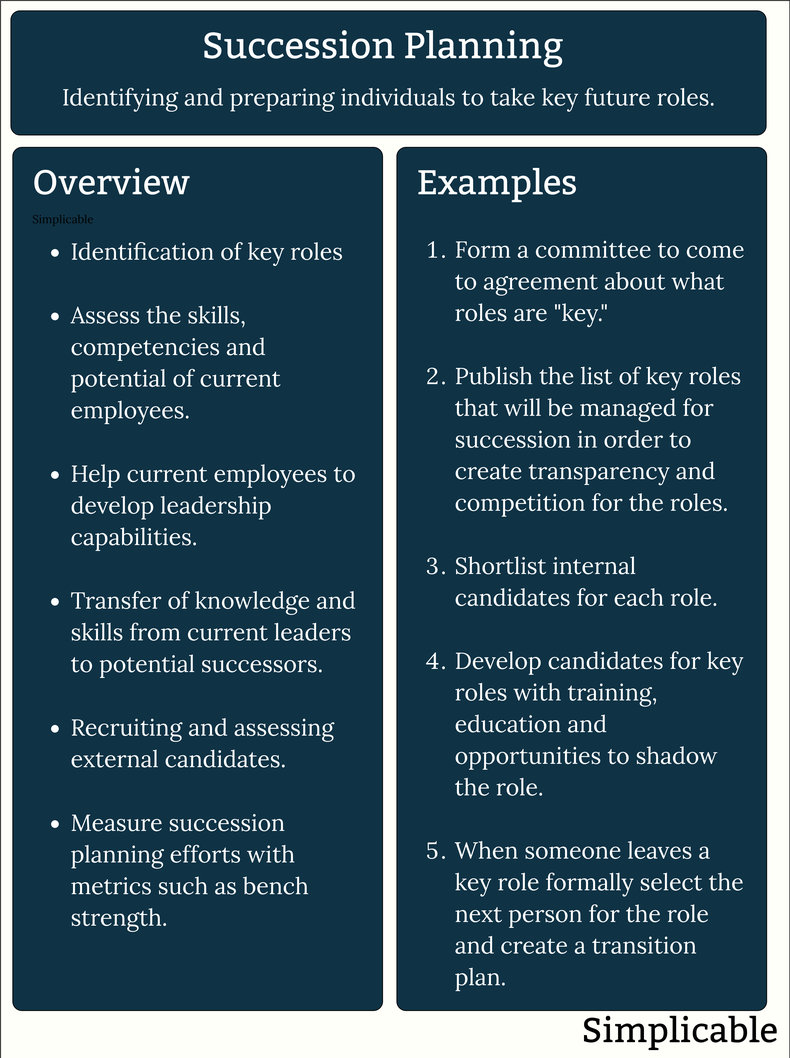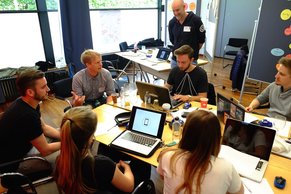
Role Identification
Identifying roles that are critical to a firm's business and operations.Job Design
Creating a detailed description and list of skills, talents and relationships required for critical roles.Competency Management
Developing an inventory of skills, talents and capabilities to compare your future needs with your current depth in each area.Performance Management
The process of setting objectives for performance and evaluating performance against these targets. This is an effective means for identifying high performers who are capable of assuming more responsibility.Career Planning
Working with each employee to map out their career goals and matching those to future opportunities in your organization. This involves setting clear expectations for what is required to achieve the employee's stated goals.Leadership Development
Leadership development programs that give employees education, training, responsibilities and experiences that allow them to become stronger leaders in preparation for assuming future roles.Transparency
In the past, it was common to hand select a few employees for leadership development based on the recommendation of executives. It is now more common to create transparent programs based on the merits of individuals as identified with performance management and competency management.Mentorship & Coaching
Current leaders and critical employees are ideally involved in mentoring and coaching a pool of talent that may someday take their roles. There may be resistance to this and it can be difficult to implement without support from governance bodies such as the board of directors of a firm.Education, Training & Development
Developing the talents of all employees, particularly high performers and those who have been selected into your leadership development program. This includes education, training, experiences and work assignments that are challenging.Internal Competition
Internal competition may be encouraged amongst potential leaders. For example, placing them at the same level in your organizational chart with competing or identical responsibilities such as a hedge fund that has potential fund managers manage investment portfolios of equal size.Job Rotation
Rotating talented employees into new roles on a reasonably frequent basis to give them a depth of experience and organizational knowledge. For example, c-level executives may be rotated such that your CMO becomes your CFO and vice versa. This can greatly improve the resilience of an organization as it generates a pool of directly experienced candidates for critical roles.Relational Capital
Relational capital are the relationships that are of value to a firm. For example, a salesperson who knows all your biggest customers on a first name basis. In addition to knowledge, succession planning may look at organizational structures and policies that create deeper relational capital such as the requirement that all sales meetings with major customers include at least three sales representatives.Knowledge Management
The identification, capture, transfer and use of organizational knowledge is important to succession planning. For example, you may use knowledge audits to ensure that enough information has been captured in certain functions and business units for future leadership to assume responsibilities in these areas without problems.Employee Satisfaction
Measuring and working to improve employee satisfaction to avoid losing high performing employees and members of your leadership development program. For example, employees who are unhappy about your job rotation strategy may be given a bonus to help them adjust to the change.Recruiting
Succession planning relies on recruitment of talent who are realistic internal candidates for critical roles. It is also important for recruiters to build broad relationships in your industry so that critical roles can be filled urgently with external candidates should the need arise.Metrics
Measuring your succession planning program with metrics in areas such as bench strength, leadership development, retention of talent, competency management and knowledge management. For example, you may identify the average number of leaders who are in development for each critical role along with an assessment of their current readiness based on measurements of their competencies.Summary
The following are basic examples of the steps involved in succession planning.
| Overview: Succession Planning | ||
Type | ||
Definition | The process of increasing an organization's resilience to the loss of employees. | |
Related Concepts | ||





























